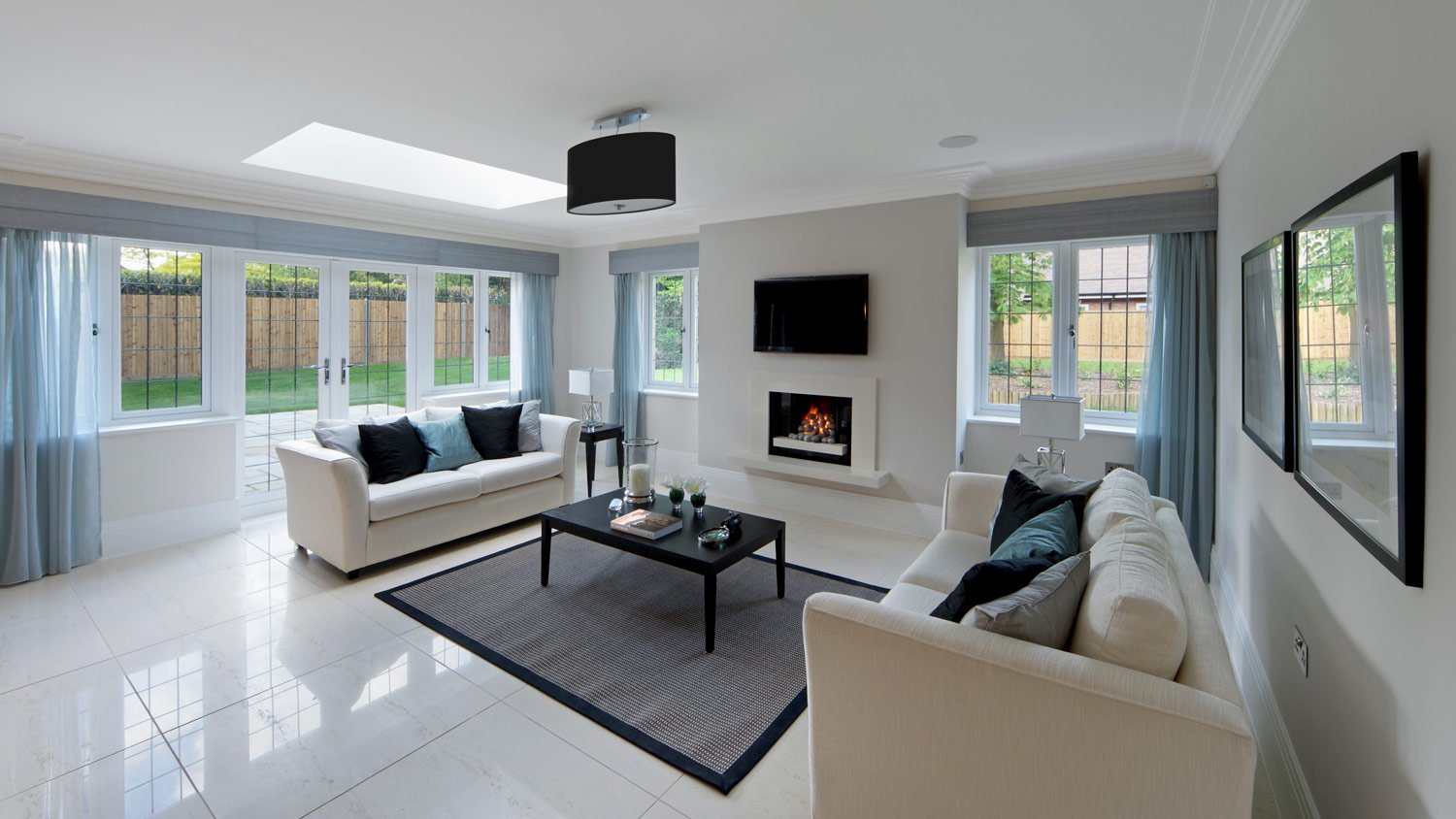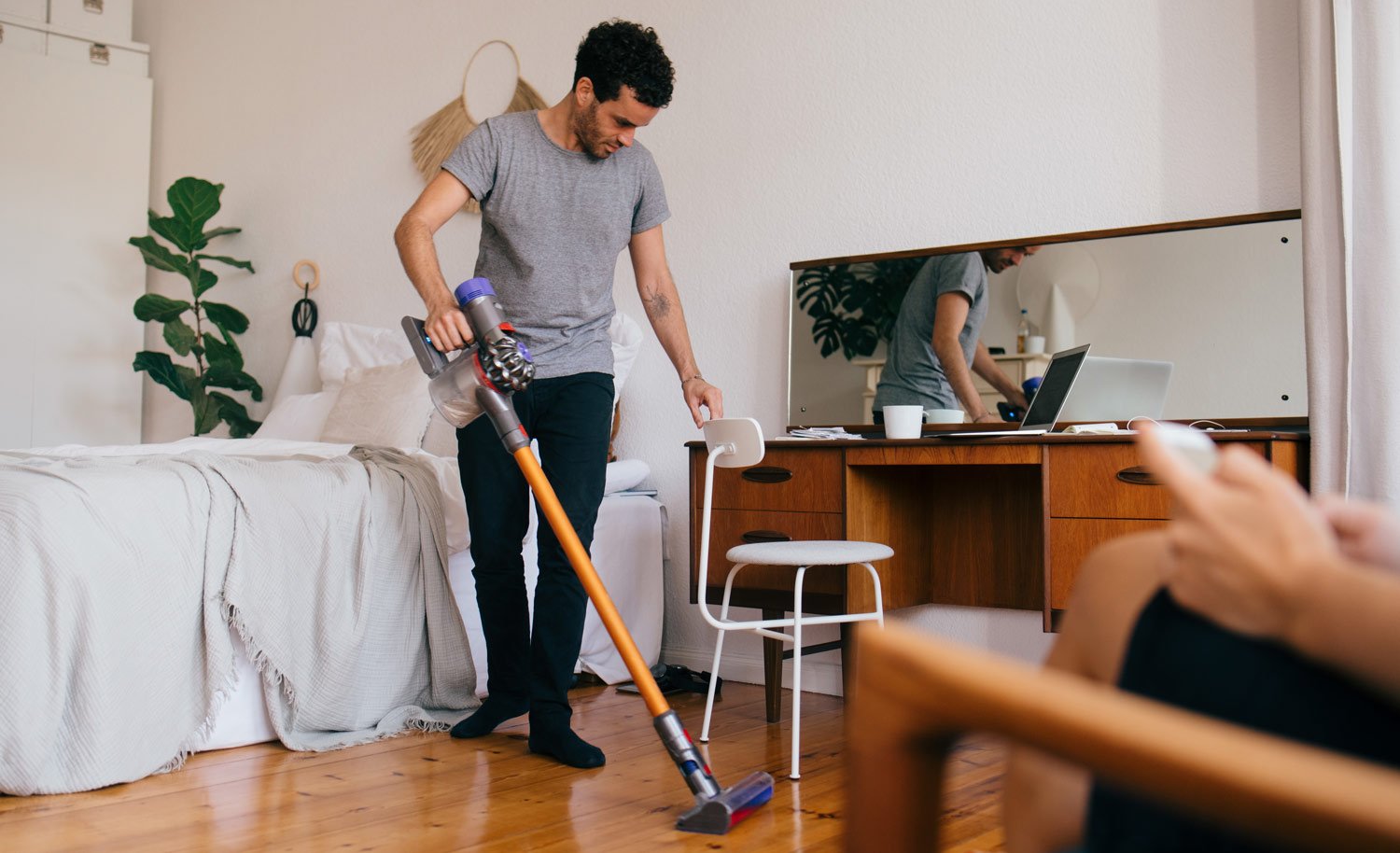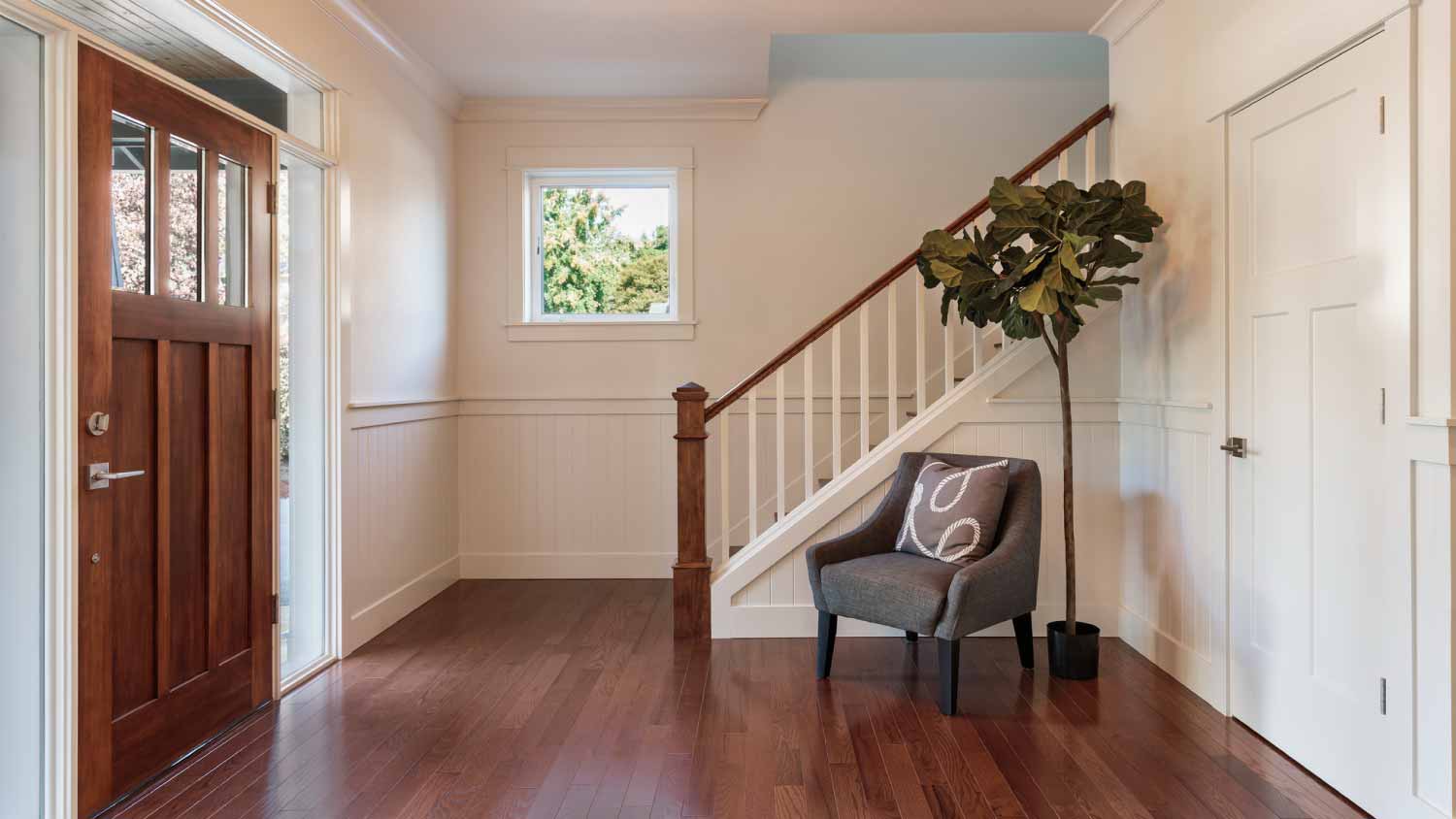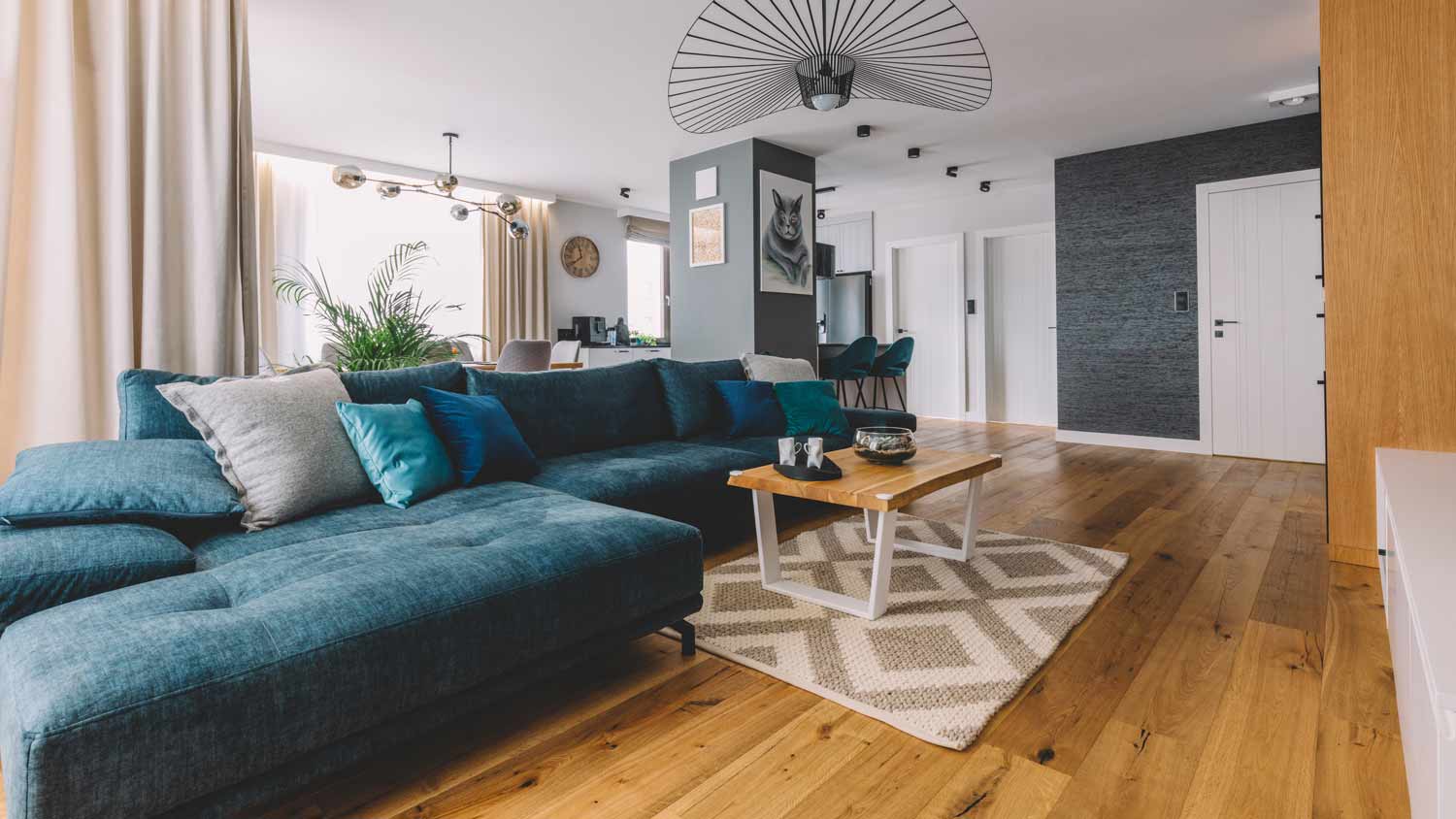The Best and Worst Flooring Options for Allergies
Choosing the right flooring option can help prevent indoor allergy symptoms


Installing the right floors for your home is essential, especially if you have allergies. According to the Asthma and Allergy Foundation of America, over 50 million Americans suffer from allergy symptoms each year. Most people assume allergy symptoms mainly crop up outside; however, you can also experience allergies in your home—and one of the biggest triggers is your flooring.
Some flooring options, like carpets, can be harder to keep clean, therefore making it easy for dust to hide within their fibers. Harder surfaces, like wood or tile, are the best because they are easy to keep clean.
In this guide, we will walk you through what you need to know about choosing the best flooring option for allergies. You can also discuss your options with a local flooring expert.
How Your Flooring Affects Your Allergies or Asthma
Flooring can harbor a host of allergens. Allergens include anything that can trigger allergies, such as dust, mold, mildew, pollen, animal dander, and more. Asthma can be triggered by coming into contact with many of these allergens, along with other substances, like volatile organic compounds (VOCs) and dust mites.
Dust and Allergens
Along with dust, allergens can include grass, pollen, dirt, leaves, dust mites, pet dander, and more. If you want to know if there are allergens swirling around your home, wait until there is sunlight streaming through the windows and pat your couch or carpet. If dust particles swirl up (and they will), you have allergens. These can accumulate on the floor in even the cleanest home and can affect those with allergies or asthma by causing itchy, watery eyes, a runny nose, sneezing, coughing, and more.
Mold and Mildew
In areas with moisture and humidity, mold and mildew can grow and trigger allergies or asthma. Mold and mildew accumulate on areas with excessive and persistent moisture, often in bathrooms and basements, and they can grow on walls, carpet, wood, and more.
VOCs
VOCs, or volatile organic compounds, are found in manufactured flooring, including laminate, vinyl, and engineered hardwood. The culprit is the adhesive used to bind the wood fibers that comprise the flooring, as well as the products used to seal the floor against moisture. VOCs can trigger asthma and allergic reactions in some cases.
Best Flooring to Install for Allergies and Asthma

The good news is that there are different flooring types that work well for those with allergies or asthma. When choosing flooring, it is important to understand how it helps to reduce the likelihood of a reaction.
Hardwood Flooring

Hard-surface flooring is a great choice for those with allergies. Many types are easy to keep dusted and will not absorb airborne particles. It is much easier to remove dirt and dust from hard-surface flooring, no matter what cleaning device you use. You want to look for nail-in or staple-down products whenever possible and keep them organic. Solid ¾-inch hardwood is an option that will add value to your home, require simple maintenance, and allow you to breathe easily.
If you are having the floor site-finished rather than factory-finished, you should ask about how the local hardwood flooring contractor plans to control the sanding dust and about the types of finishes they will apply, as these can trigger allergy symptoms. These days, there are some waterborne finishes that will keep the VOCs low and the smell out, too.
Laminate
Laminate flooring is a good choice for those with allergies or asthma because, like hardwood, it is easy to clean. Dust, dander, grass, and leaves can be vacuumed up or dust-mopped daily to reduce the chance of a reaction. It is inhospitable to mold or mildew unless moisture accumulates for a substantial length of time, so be sure to clean up spills or pet accidents as quickly as possible.
Laminate products can give off VOCs that may be found in the adhesives that bind the wood fiber core together. There are nontoxic and low- or zero-VOC products on the market, though they may be more expensive than standard laminate options. There are also concerns about laminate shedding microplastics with wear and tear.
Engineered Hardwood
Like other hard flooring options, engineered hardwood is a good option for keeping allergies and asthma at bay because it can be kept clean to remove allergens from the home. Engineered hardwood features a wood core, typically plywood, that is covered with a thin layer of real hardwood. Like laminate, it can give off VOCs that result from the adhesive used to bind the materials together or the sealant used.
Vinyl

Installing vinyl flooring can be a better option for allergies than carpeted flooring because it is easier to clean, therefore making it harder for allergens to hide on its surface. If you really want to avoid allergens like mold and mildew, you can choose vinyl sheet flooring that does not have any gaps where moisture can hide. Modern vinyl planks and floor tiles can even mimic the look of other materials and will create a highly durable surface. Be careful of using adhesives that may be high in VOCs that could trigger allergies.
Linoleum
Linoleum (often mistaken for vinyl) is a great flooring option for people with allergies because it is an all-natural product made from linseed oil and other renewable, biodegradable ingredients like cork dust, pine resin, jute, and ground limestone. As a result, it may be less likely to trigger allergies than synthetic products. As with vinyl, it is important to make sure to use an adhesive that will not trigger allergies.
Tile and Stone

Most tile and stone with smooth finishes are great when it comes to hypoallergenic flooring options. However, more natural stones and tiles with jagged edges can trap allergens like dirt, dust, and mold. Try looking for a polished surface like marble, but be aware that this can be slippery. Like other flooring options mentioned, it is important to watch the VOC levels when it comes to adhesives and grout options.
Cork and Bamboo
Cork flooring and bamboo flooring are natural options that may be a good flooring choice for allergy and asthma sufferers. Both types of flooring are natural and sustainable, made primarily from renewable resources. Because they are so natural, they can be more allergy- and asthma-friendly, but it is important to pay attention to the ingredients in the sealant, as these can include VOCs that should be avoided to reduce the likelihood of an allergy or asthma attack. Because bamboo is part of the grass family, make sure there are no grass allergies in the home before choosing this material.
Flooring to Avoid for Allergies and Asthma
For people with allergies and asthma, there are some flooring choices to avoid.
Carpet

Heavy, high-pile shag carpets are not a good flooring choice for people seeking relief from dust and other airborne allergens. This particular type of carpet holds on to pesky particles and other irritants. Despite vacuuming thoroughly, even the most capable machines have a hard time with thicker carpets, making it harder to keep them clean.
If carpet is your only option, go for a low-pile one with a tight nap. Berbers and cut-loop patterns can be a nice place to start shopping. Wool carpets are another option to consider. While wool costs more and ranges between $5 and $26 per square foot, this material is natural, biodegradable, and, if you take care of it properly, it will last longer.
Floors High in VOCs

Floorings that are high in VOCs—aka volatile organic compounds—can be harmful to everyone, but they are especially hard on those who already have sensitive allergies. The adhesives used in some types of engineered hardwood, laminate, and vinyl floorings can carry high amounts of VOCs. Carpets treated for waterproofing and stains can also contain harmful substances.
Be sure always to check labels and ask about the installation adhesives for glue-down items and treatments. Some of these products release a strong chemical smell.
More Tips for Choosing an Allergy-Friendly Flooring Option
So, what is the best way to know if you are picking out products that will work with, not against, your health? Make sure your contractor has experience installing floors with allergy symptoms in mind—and if they do not have an answer for you, they should at least know who to ask.
Many flooring manufacturers have allergy facts at the ready, and you can find a lot of information on the labels. For instance, if you do decide to go with a synthetic carpet, make sure to look for the options that have Green Label Plus- or Greenguard-certified carpet and padding because they have fewer allergy triggers. Overall, do not be afraid to ask for documentation of any health claims a sales representative might be making.

.jpg?impolicy=leadImage)



- 11 Types of Flooring to Consider for Your Home
- The Best Flooring Options for Dogs: A Complete Guide
- 7 Cleaning Tips to Help Ease Your Spring Allergies
- 6 Inexpensive Flooring Options That Look Good and Save You Money
- What Is the Best Tile for Bathroom Floors?
- Laminate vs. Vinyl Flooring: Pros, Cons, Costs, and More
- 7 Types of Flooring That Can Be Laid Over Carpet
- 10 Simple Ways to Reduce Allergens in Your Home
- 4 Household Cleaning Products That Can Cause Allergy and Asthma Reactions
- The Complete Glossary of Flooring Terms You Need to Know










